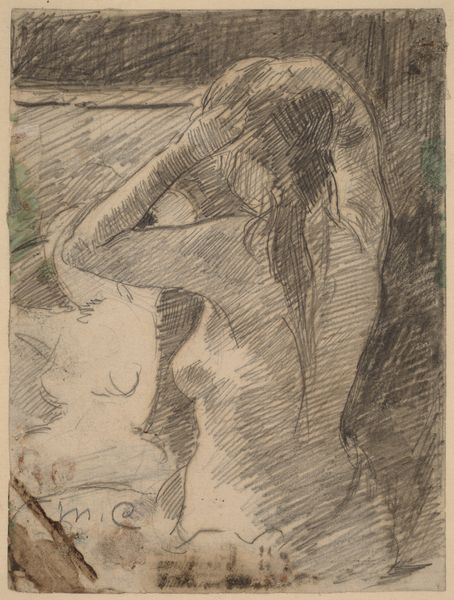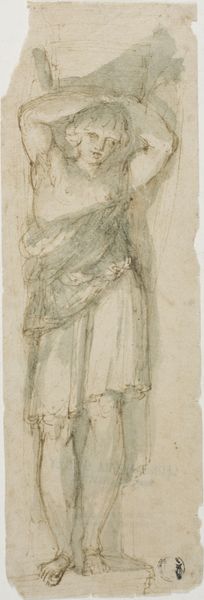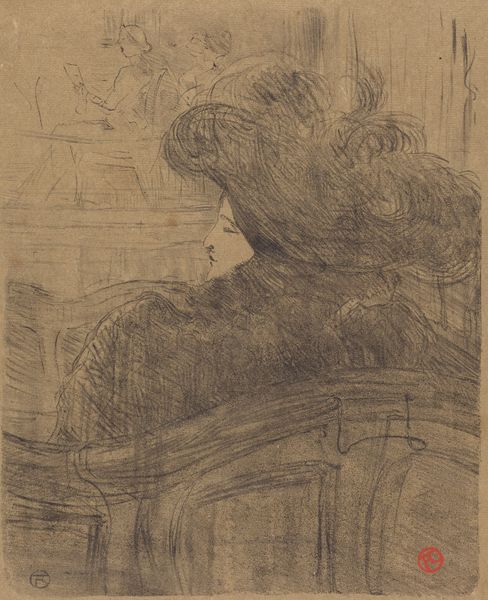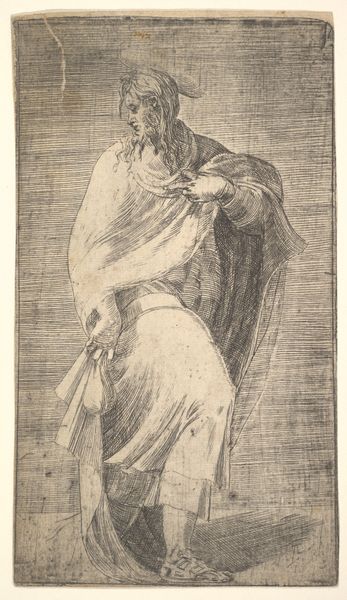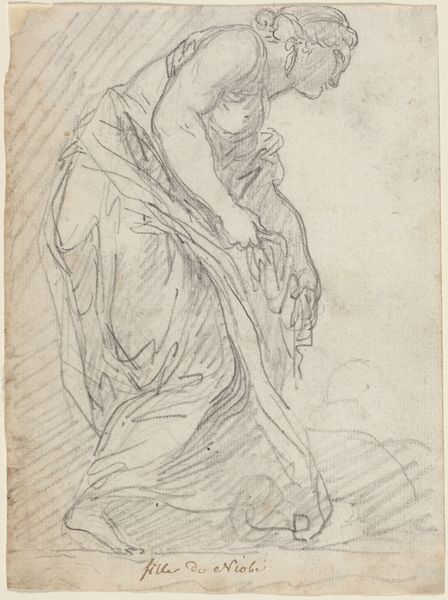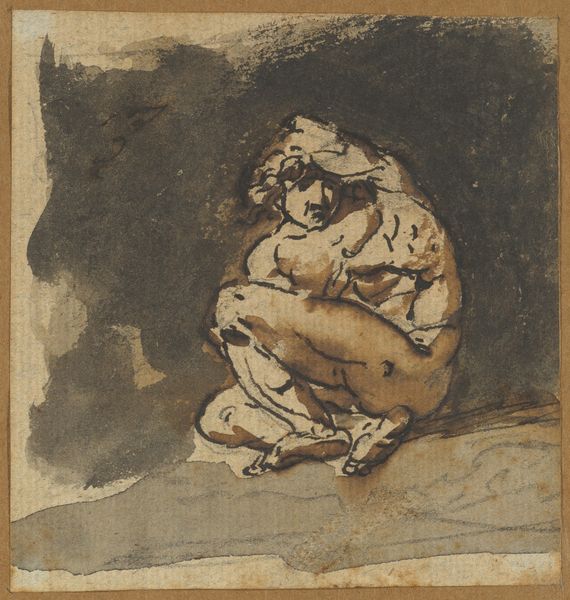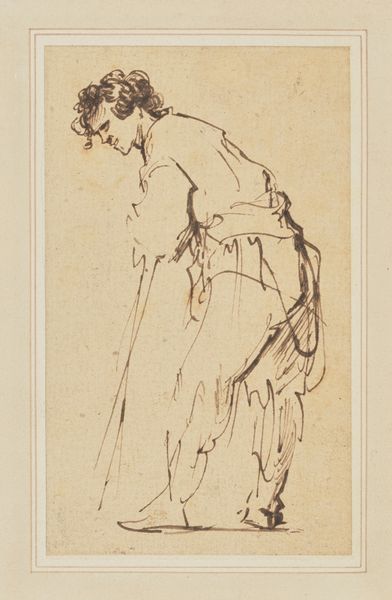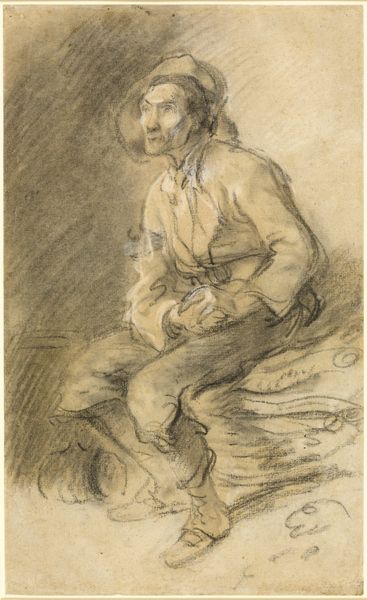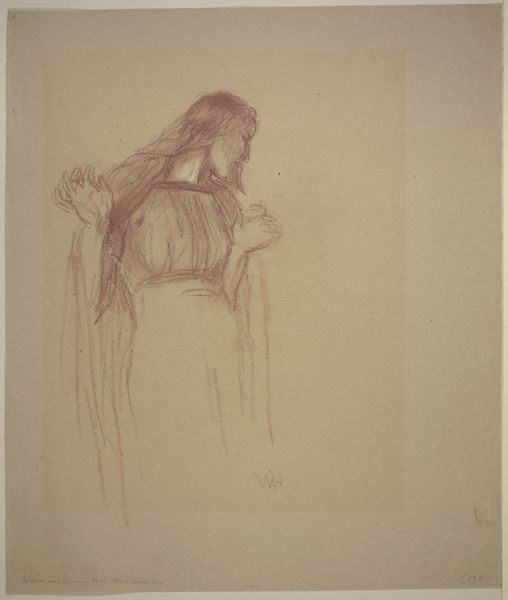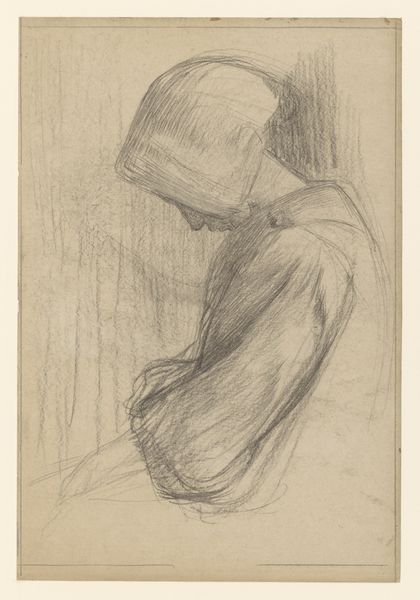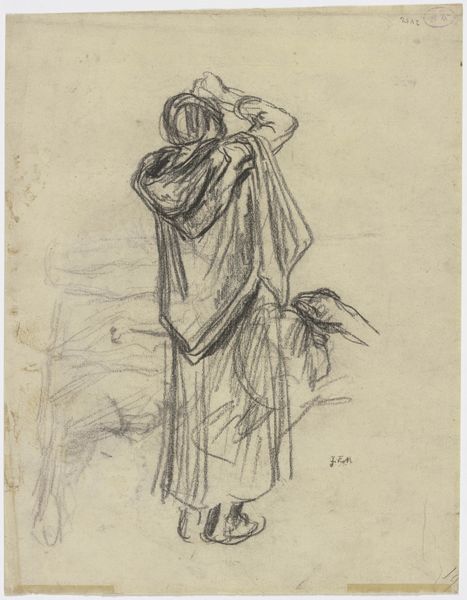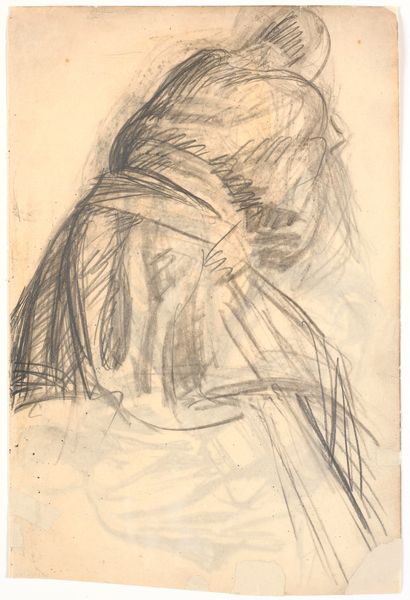
drawing, paper, pencil, graphite
#
portrait
#
drawing
#
pencil sketch
#
figuration
#
paper
#
coloured pencil
#
underpainting
#
pencil
#
graphite
#
genre-painting
#
watercolor
#
realism
Dimensions: height 160 mm, width 97 mm
Copyright: Rijks Museum: Open Domain
Johannes Tavenraat created "Drijver te Best" using pen and brown ink, with brown wash, over graphite. This drawing offers a glimpse into the lives of rural workers in the Netherlands during the 19th century, a period marked by significant social and economic changes. The artwork portrays a man seated, head bowed, gripping a staff. His posture and clothing suggest a life of labor and hardship. Tavenraat's choice to depict such a subject reflects a broader artistic interest in the lives of ordinary people, particularly those on the margins of society. This was a time of increasing awareness of class divisions. The man's downcast gaze evokes feelings of weariness, perhaps hinting at the emotional and physical toll of his work. Tavenraat's focus isn't on idealizing rural life, but rather on capturing the often harsh realities of it. This emphasis encourages viewers to reflect on the social and economic forces shaping individual lives. The artwork serves as a reminder of the human stories behind historical transformations.
Comments
No comments
Be the first to comment and join the conversation on the ultimate creative platform.
